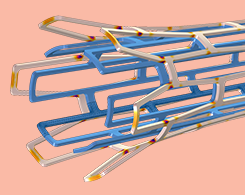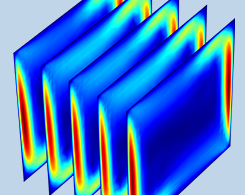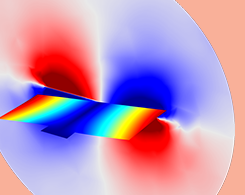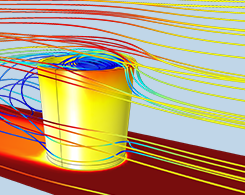Structural & Acoustics Blog Posts

Analyzing the Deformation of a Biomedical Stent with Simulation
By studying deformation in an arterial stent, biomedical engineers can account for unwanted effects like dogboning and foreshortening long before the device is ever implanted.

Simulating Natural Convection in Air with COMSOL Multiphysics®
From small electronic components to large buildings, natural convection is a transport phenomena found in engineering disciplines of all sizes. Here’s an example of natural convection in air.

Optimizing Thermophotovoltaic Designs with Heat Transfer Simulation
Thermophotovoltaic (TPV) systems, known for their flexible fuel choice options, immovable parts, and potential for efficient power generation, can be optimized with heat transfer modeling.

Analyzing the Viscous and Thermal Damping of a MEMS Micromirror
Micromirrors are efficient and inexpensive. Here, we go over 2 types of analyses for a MEMS micromirror design, frequency-domain and transient, using the COMSOL® software.

How to Model Moisture Flow in COMSOL Multiphysics®
Learn how to model moisture flow in COMSOL Multiphysics®, which you can apply to industrial examples such as building envelopes and food packaging.

Applying and Interpreting Saint-Venant’s Principle
Saint-Venant’s principle is found in most structural engineering textbooks, but what is its exact meaning? We go over its history, definition, and relevance to mechanical analyses.

Analyzing a MEMS-Based Strain Gauge Design with Simulation
MEMS-based strain gauges are helpful in both civil engineering and biomedicine. Read about a team of researchers who used the MEMS Module to analyze strain gauge designs.

Model Deforming Objects with the Arbitrary Lagrangian-Eulerian Method
The combined efforts of Leonhard Euler and Joseph-Louis Lagrange inspired the arbitrary Lagrangian-Eulerian (ALE) method, which we can use to model deforming objects.
